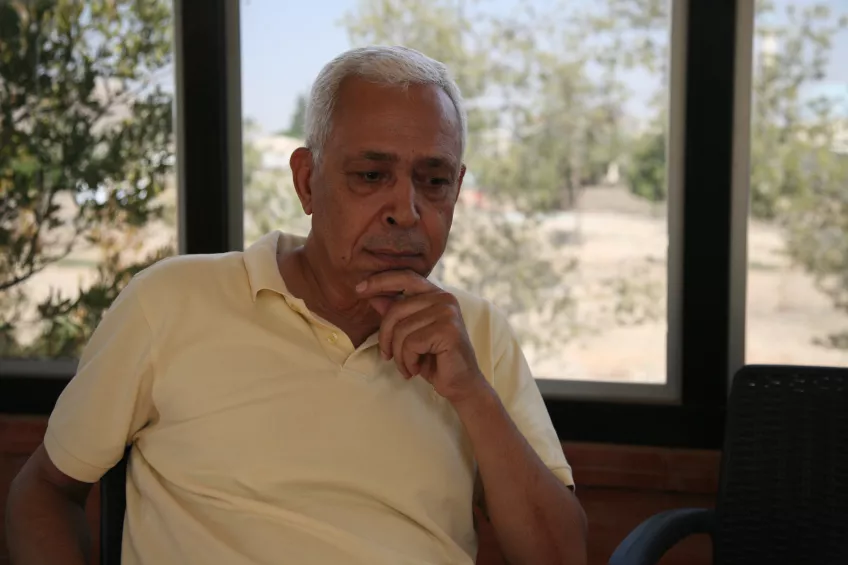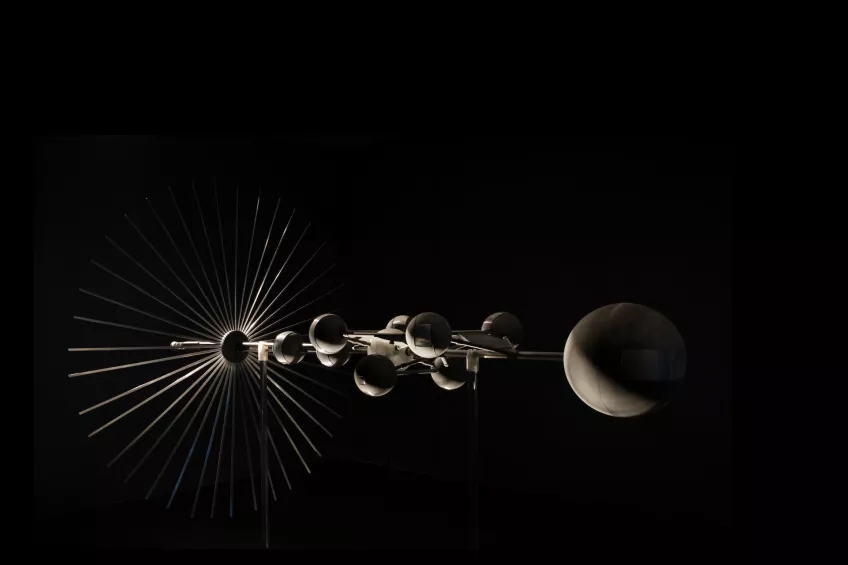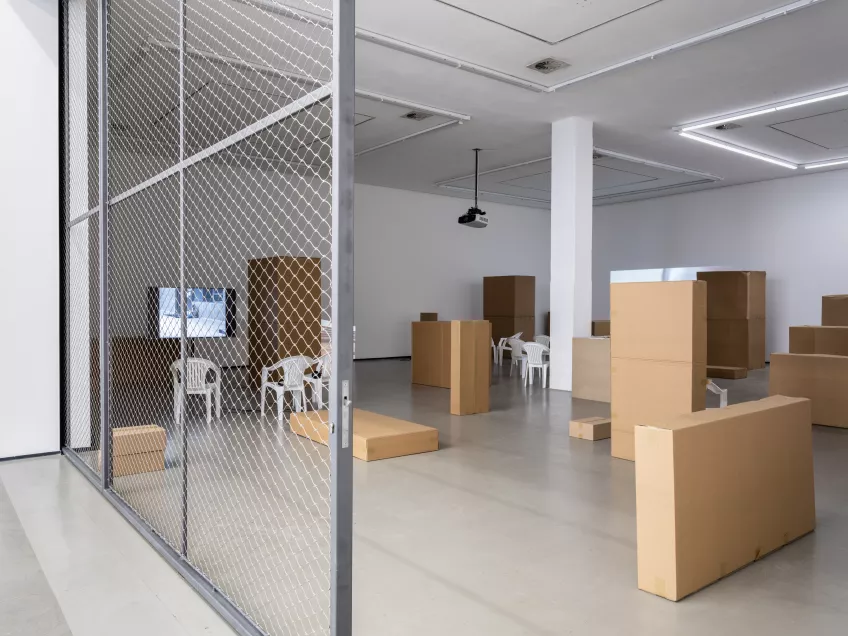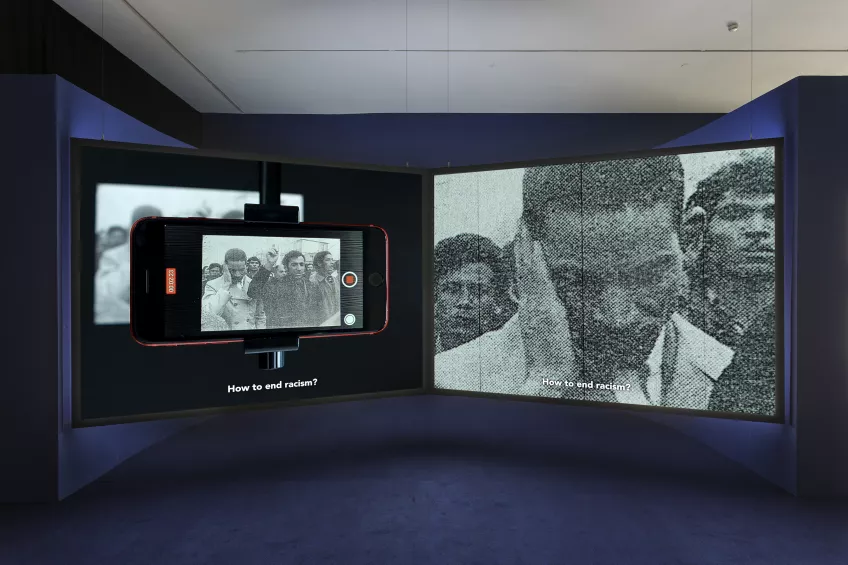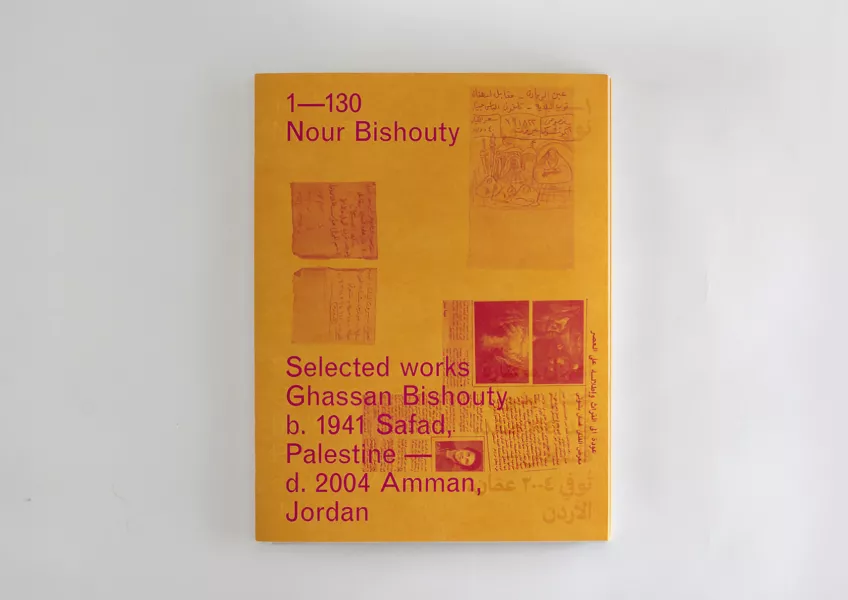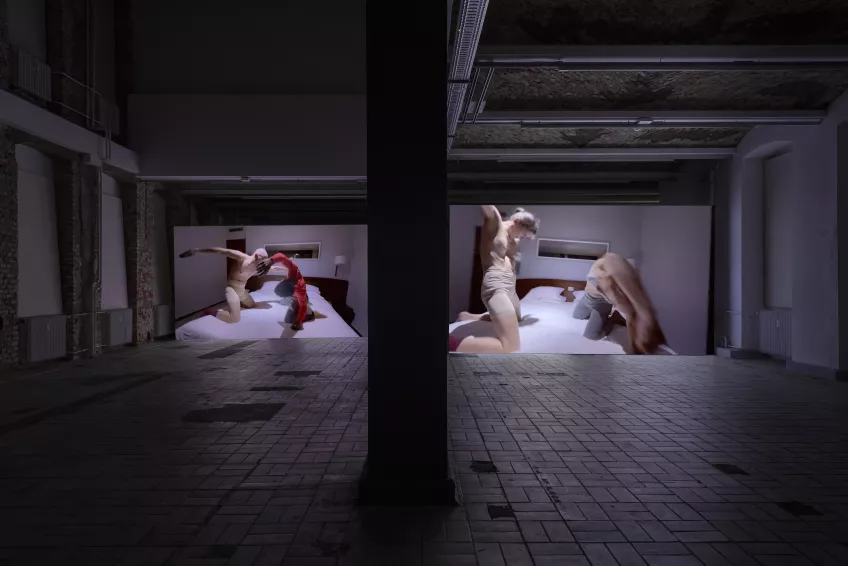PhD Students
Our PhD education is based on artistic theory and practice. The reflective and theoretical content of the education is not the goal but a means of artistic development and the emphasis for the studies is on independent artistic development work. We have six doctoral students, all engaged in different artistic practices.
Sven Augustijnen
The proposed aim of my Ph.D. research Archival Procedures, Unresolved Processes: An Anthropophagy of History, is to work on and work through one large and multi-facetted art project that is currently in progress.
In different ways, this project has to do with little-explored fissures within the larger fractures of a modern history that runs from the Second World War and the new political world order that emerged from it, to the birth of Israel and the Palestinian conflict, the Cold War, decolonization and neo-colonization processes, movements of revolution and counterrevolution. While originating in the past, the project resonates in the contemporary global context: Fierté Nationale focuses on the complex material, symbolic and ideological meaning and history of the FAL rifle; how the rifle has been used on both side of the ideological spectrum during the Cold War and through the connections between the Belgian weapon industry based in Wallonia and those in South-Africa and Israel, among other things.
Excavating lost or discarded documents, I develop strategies of presentation that involve practices of unfolding and exposing, montage and juxtaposition, derivation and diversion within my work. The result brings to view ‘the shadow archive’ of established historical representations.
This working with archival documents, which forms the basis of my work, particularly on colonial and post-colonial spaces, is always combined, or more exactly interwoven, with a practice of working with living individuals. These are men and women with whom I engage in a process of exchange and dialogue. Through speech and traveling to particular sites in which they are placed in specific situations, these individuals are driven to re-enact situations and complex stories. These processes, which are documented and staged in my films, posit these live, breathing bodies as ciphers, more than just receptacles of historical events, traumatic or not. One could say that history is written within those bodies. And in working with these individuals, we/they enact something of an anthropophagy of history. That is to say that, as I have observed it, survivors, relatives and witnesses of the revolutions and contra-revolutions that I investigate, viscerally need to interiorise and embody memories, to digest and spit them out again. In this process they work through these memories and transform them in what I like to call, bodily and verbal prayers of and for the living and the death.
Sven Augustijnens profile in Lund University Research portal
Yael Bartana
Shades of Ambiguity
The core question of my thesis is the role of ambiguity in my work.
Confronting the discourse on the effect of trauma on contemporary politics, I began to sense that there are limits to the political discourse in which I was hemmed in. I felt that I needed a new strategy to help me explore the subject or talk about it in a different way. That feeling led me to create ambiguity and ambiguities in the images and films I developed and the voice that I wanted to articulate. This was a way to move away from the imprisoning, predictable and very limiting discourse of knowing the answers and knowing the questions.
Through looking into my projects - The Polish Trilogy (2007-2011) and Light to the Nations (2023) - as case studies, I ask whether ambiguity as a method can tackle nationalism, bigotry, extremist tendencies and the construct of national consciousness?
How does ambiguity challenge the Status quo in Israel -Palestine that entrench and fortify the position of the side that benefits from it?
I use ambiguity as a tool to dive deeper into highlighting the problem of nationalism as Ideology; as a force that gives a sense of community; a sense of belonging, but also as a system of inclusion and exclusion. Shades of Ambiguity can be identified through such modes of irony; satire; temporality; spacing; transgression of symbols; utopian visions; queering; and the separation of form from ideology.
Yael Bartanas profile in Lund University Research Portal
Jürgen Bock
Through the lens of the history of Maumaus, an art institution in Lisbon dedicated to education, curation and production, my aim is to come to a greater understanding of how art and arts education – with their inherent critiques – have shifted over the last 25 years. My research aims to explore to what extent the history of Maumaus can be considered to mirror developments in the wider art world from the 1990s onwards. The project considers whether Maumaus has been able to provide an alternative to an increasingly accelerated world of ‘cultural industries’ or may paradoxically be understood as an institution that has enabled the system it opposes. I consider the specific socioeconomic and political circumstances under which Maumaus has been able to develop, and what such circumstances – encountered and recognised or consciously created – have in turn both enabled and disabled. The PhD is based on a reflexive analytical approach to achieve an in-depth understanding of today’s phenomena within what seems to be an increasingly professional art world that functions under dictates of performance indicators and productivity, based on instrumentalised modes of enquiry and experimentation.
Jürgen Bocks profile in Lund University Research Portal
Bouchra Khalili
Bouchra Khalili The Hypothesis of a New Community (to Come): Speaking a Collective voice in/from the 1st-personal Singular This Phd research starts from my practice in film and video. Since the early 2000’s, I have devoted myself to the making of works examining through a collaborative method how filmic forms can create a space for subjects rendered invisible by the nation-state model: stateless citizens, individuals forced to cross borders illegally, undocumented workers, 2nd-class citizens from immigrant descent in global north countries. Through my practice, I aim at suggesting forms of belonging freed from the restrictive and normative conceptions of the nation-state model that proceeds by exclusion to define the “right to belong” to a political community.
In all of my film and video works, visual and sonic forms are combined to create a space in which the ones concerned in the first place are represented with and through their own bodies, their own voices, their own words, their own languages - including their native unwritten languages and dialects - their own situated positions (social, political, historical), and eventually their own world views. From the 1st-person singular they formulate a “right to belong” and implicitly convey the hypothesis of a potential new political community to come into being. For this Phd research, and starting from my work and the reflection I have developed with and through it, my Phd research will discuss the following research question: How can film allow us to envision a potential political community starting with and from those who are excluded from the “right to belong”?
Bouchra Khalilis profile in Lund University Research Portal
Jacob Korczynski
My research asks how the activities, associations, and organizing of distribution can be a critical, ethical, and sustainable curatorial practice. In doing so, it acknowledges this mode of collaboration as undertaking two separate but interconnected initiatives: establishing and maintaining a curatorial framework for a group of artists and their distributed works together, and at the same time facilitating the means for their projects to be accessed, executed, and presented across a potentially unlimited number of contexts. This dual approach asks the curatorial questions of who and what enters into distribution alongside the when and where of presentation, which is framed by the overall question: why distribution? My trajectory as a curator which has arrived at this body of research is indebted to extant distribution models initiated by artists. Just as importantly, my research departs from the ongoing histories of those networks in order to situate the artists at the centre of my research outside of a medium-specific approach.
It is important to assert that pursuing distribution as a method of curatorial practice does not simply mean developing an organizational structure that then disseminates extant or upcoming works by artists. Instead it is premised upon the practices of artists who take distribution as material.
Jacob Korczynskis profile in Lund University Research Portal
Emily Wardill
Emily Wardill's practice spans film, video, sculpture, performance, photography and installation. It has been an ongoing enquiry into the imagined image – what it is, what it has been used for and how it leaves indelible motes and shrapnel behind it. This has taken her from examples of entropy to case studies on risk detailing fires attributed to paranormal activity. It has travelled from psychoanalytical case studies on negative hallucination to memory palaces and their relationship to colourless vision. From stained glass as an early device to communicate with the illiterate right up to the filmic technique of 'day for night' - reversing it to reflect on technological vision, performed gender and imagined utopias.
Wardill’s work has been exhibited at KW, Berlin, Secession, Gulbenkian Project Spaces, SMK , de Appel arts centre, List Centre MIT , The ICA, XYZ Collective Tokyo ,The Biennale of Moving Images Geneva, The Serpentine Gallery, The Hayward Gallery, MUMOK Vienna; and MOCA, Miami. She has shown in the Berlinalle Forum Expanded and the New York and London Film festivals. Her work was awarded the Jarman Award in 2010, the Leverhulme Award in 2011 and the EMAF award in 2021. She participated in the 54th Venice Biennale and the 19th Sydney Biennale.
Wardill has taught at The University of the Arts Helsinki, University of British Columbia , Central Saint Martins, Academy of Fine Arts Munich, School of the Art Institute Chicago,National Art School Sydney, Städelschule, Goldsmiths University & the CCA San Francisco.
Contact
Gertrud Sandqvist
Supervisor
Phone: +46 40 32 57 06
Email: gertrud [dot] sandqvist [at] khm [dot] lu [dot] se (gertrud[dot]sandqvist[at]khm[dot]lu[dot]se)
